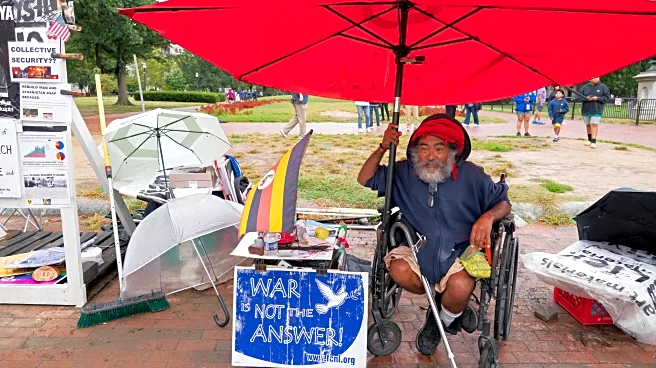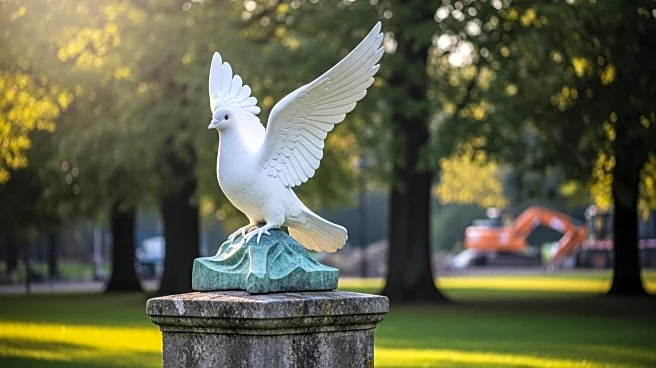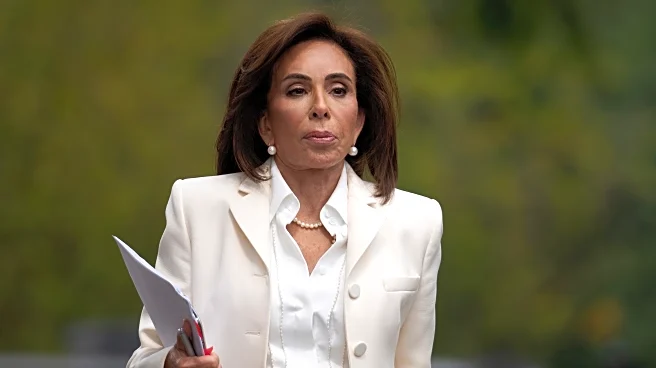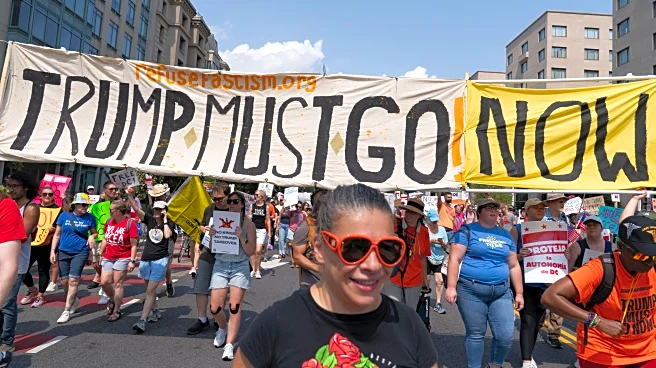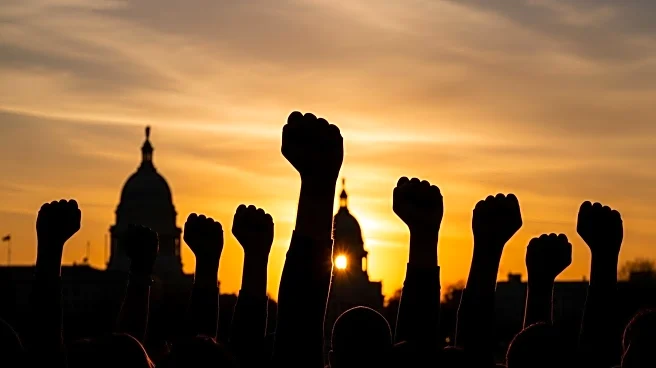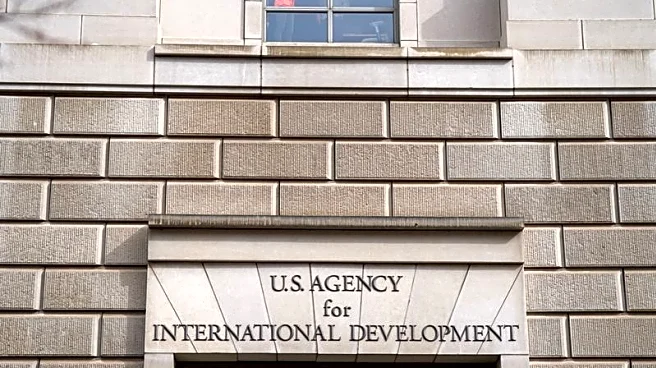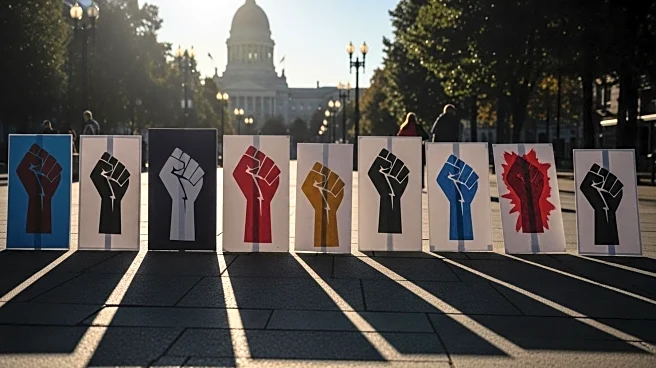What's Happening?
Federal law enforcement officials dismantled parts of the White House Peace Vigil, a long-standing protest advocating for nuclear disarmament and global peace, following orders from President Trump. The vigil, located in Lafayette Square, has been a fixture for over 40 years, surviving multiple administrations and various weather conditions. The dismantling occurred after Brian Glenn, a correspondent for Real America’s Voice, described the vigil's blue tent as an 'eyesore' to President Trump, who then ordered its removal. Despite resistance from volunteers like Will Roosien, who attempted to protect the structure, federal officers proceeded with the dismantling, leaving behind protest materials.
Why It's Important?
The dismantling of the Peace Vigil raises concerns about the balance between public safety and the right to protest. The vigil has been a symbol of continuous advocacy for peace and human rights, and its removal could be seen as a suppression of free speech. This action may impact public perception of the administration's stance on civil liberties and could provoke reactions from activists and civil rights groups. The event highlights ongoing tensions between government actions and public demonstrations, especially in politically sensitive areas like Washington, D.C.
What's Next?
Volunteers have begun reassembling the protest structure, indicating a continued commitment to the vigil's cause. The incident may lead to increased scrutiny of the administration's policies regarding public protests and could prompt legal challenges or advocacy efforts to protect the right to peaceful assembly. Political figures and civil rights organizations may weigh in on the situation, potentially influencing future policy decisions related to public demonstrations.
Beyond the Headlines
The dismantling of the Peace Vigil touches on broader issues of governmental authority and the protection of First Amendment rights. It raises ethical questions about the treatment of long-standing protests and the role of government in regulating public spaces. The event may also reflect cultural shifts in how protests are perceived and managed in the nation's capital.



